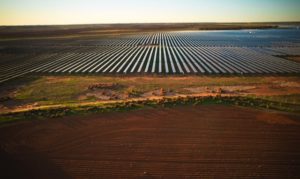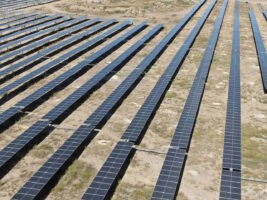Australia’s leading climate change negotiator says it is clear that the UN climate summit held in New York last month generated momentum towards an agreement in Paris at the end of 2015.
Climate Ambassador Justin Lee said the summit, hosted by UN secretary general Ban ki-moon, and attended by 120 world leaders, including US president Barack Obama, and Australian foreign minister Julie Bishop, had underpinned the range of actions occurring around the world. “It shows that things are happening,” he said.
“It was a very important meting, and a very good meeting.,” he told a forum on international talks hosted by Norton Rose Fulbright in Sydney on Thursday.
“From the negotiators perspective, having so many leaders and ministers, has helped to increase momentum internationally. And it has focused the mind on what needs to be done in the lead up to Paris.”
Lee said the UN summit made clear that were now technologies and pathways to achieve the 2C goal – agreed to in principle in Copenhagen – and the world was moving from the perspective that climate action comes at a net cost to one where it presents opportunities.
“The summit helped outline what those opportunities are,” he said.
Lee warned, however, that Paris should not be seen as some sort of “silver bullet”, as Copenhagen had been painted.
Lee’s presentation was a useful catch-up to where the talks are, and what they may try to achieve.
In broad terms, the 21st “conference of the parties” in Paris next December will seek to finalise a new global agreement that will replace the Kyoto Protocol and which will apply from 2020 onwards.
The objective of the agreement is to stabilize greenhouse gas emissions in order to try and keep average global warming to below 2C. (The world is probably half way there already and likely locked in a lot more).
The second main objective is to make the agreement applicable to all countries, with the expectation that all countries, including developing nations, will make a contribution.
But there are all sorts of questions to be resolved. Should it be legally binding, and if so, to what extent. If, as suggested, countries make individual commitments, how then does the world reach a 2C target if a significant “carbon gap” is still apparent.
Lee said the next “COP” in Lima this December will be important because it will try and outline the parameters of individual commitments – what those targets will be, and how they will be delivered (time frames, base years, gases covered etc).
That will allow for an assessment to be made of the aggregate impact – will the individual commitments be enough to reach the 2C limit. It is not exactly clear how that gap may be bridged, given that it is not so much a “top down” imposition, but a “bottom up” engagement from each country.
The first indications of whether the 2C target can be bridged will come early next year, when the major emitters present their “intended nationally determined contributions” are made. Europe and the US will likely to that in the first quarter, Europe with a possible 40 per cent reduction target by 2030.
China, and a potential date for a “peak” in its emissions, is expected in the first half of the year. Australia has not yet said when it will review its post 2020 targets.
There are debates around the definition of what rules are needed, and when do we need to negotiate them. This includes the use of market mechanisms (and to ensure there is no double counting), and the land sector (very important for Australia). It could be that the commitments made in Paris will be conditional, and may need to be revisited after that.
Australia has suggested that the commitments could be linked to a schedule that may be binding or not.
One advantage of non-binding targets is that some countries will find such targets easier to ratify. (Lee didn’t mention it, but the US springs to mind). And non binding targets can be more easily ratcheted up.
There are similar debates on the time frame of the targets. Should they be 2025, as the US favours, or 2030 as the EU, China and Japan favour. An argument for 2025 is that it does not lock in low ambition. An argument in favour of 2030 is that it provides greater certainty for business. What should be the time-frame for ongoing review?
“Hopefully we can get a fairly clear target (by Paris),” Lee said. “But we may need to strengthen the rules between then and 2020.” On this tack, Lee agreed that Paris may be a pit-stop rather than a final destination. But it needs to be one that where the major emitters commit to reaching the target they agreed in Copenhagen.
Other key decisions to come out of Lima will be on the level of ambition pre-2020. All major studies, including by Australia’s Climate Change Authority, have suggested it will be less costly to take action now, rather than pushing it beyond 2020.
And Lima also needs to decide on the balance between mitigation, adaptation, and finance. And what legal form the agreement will take.









